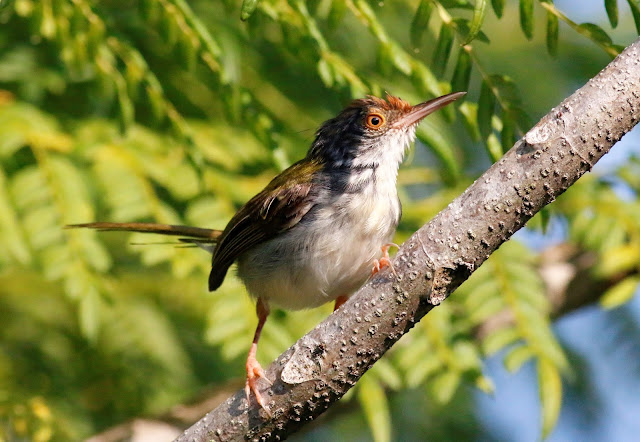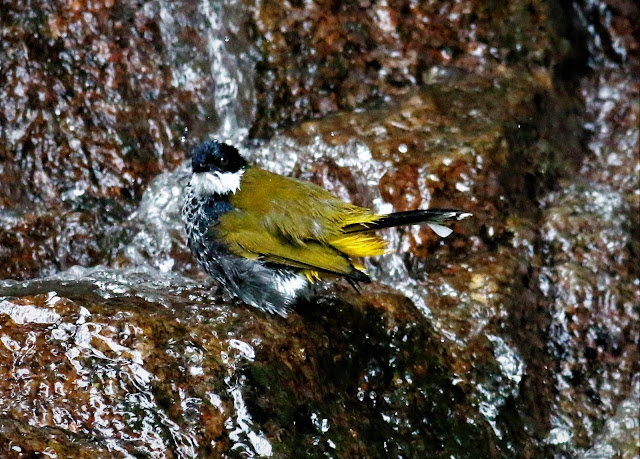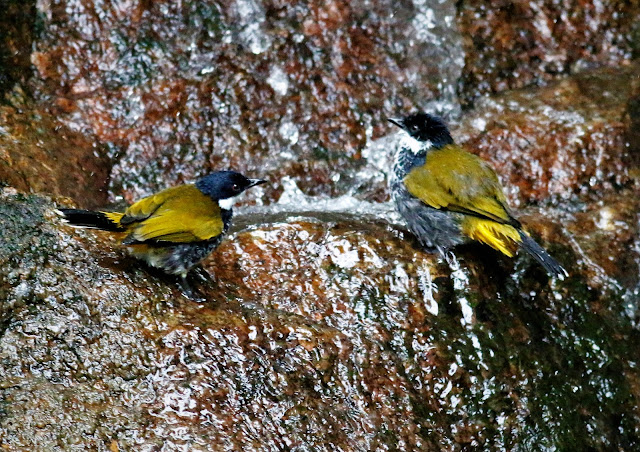When you go around looking for birds, be mindful of other creatures which may be lurking along your favourite trails. Some of them can be really special especially a nice but venomous looking snake like a Wagler's Pitviper (Tropidolaemus wagleri).
This is a female Wagler's Pit Viper
Venomous terrestrial species of snakes in Malaysia are basically divided into 2 families, the elapidae which include cobras and kraits and viperidae which include viper and pit vipers. There are 3 subfamilies within this family of vipers: the Fea's viper (Azemiopinae), Pit vipers (Crotalinae) and Pitless vipers or true vipers (Viperinae), Iman D. Johan Arief, et al (2021).
According to their research, Iman D. Johan Arief, et al (2021) argued that Wagler's pit viper (Trimeresurus wagleri) is among the commonest species of pit vipers found in Malaysia. Due to its highly differentiated morphological characteristics, it has now been categorised in a different subgenus known as "Tropidolaemus".
In another earlier research, Choo Hock Tan et al (2017) reported that Tropidolaemus is mainly distributed in Southeast Asia. There are currently at least four species of Tropidolaemus been recognised in the literature and media including the most commonly described, the "Temple pit viper" (Tropidolaemus wagleri), also known as speckled pit viper and Wagler's pit viper.
While variations in coloration do exist, generally the adult females have a black or dark green base coloration with yellow cross-banding while the males basically retain most of the external characteristics from the juvenile phase; they are typically slender and much smaller than the females, says Iman D. Johan Arief, et al (2021) and as can be seen from the above photo.
According to Iman Dr. Johan Arief et al (2021) the potency of the haemorrhagic and thrombin-like activity varies depending on the species, which may result in thrombocytopenic syndrome and haemorrhage.
Although the bites of members of this genus rarely result in serious envenomation, nevertheless, their bites can be excruciatingly painful with local blistering, tissue necrosis, and haemorrhage, Iman Dr. Johan Arief et al (2021).
References:
i) Choo HockTan, KaeYiTan, Michelle Khai KhunYap, & Nget HongTan, "Venomics of Tropidolaemus wagleri, the sexually dimorphic temple pit viper: Unveiling a deeply conserved atypical toxin arsenal" (Feb 2017).
ii) Iman D. Johan Arief, Xin Y Er, Rafiq Shajahan, Faiz Johan Arief, Naganathan Pillai, "Venomous Terrestrial Snakes in the Tropics of Malaysia: Review", (Mar 2021).
Here are some of the birds seen along the way.
I believe this should be a Spectacled Spiderhunter.
Quite a large bird and their calls can be heard quite a distance away.

































